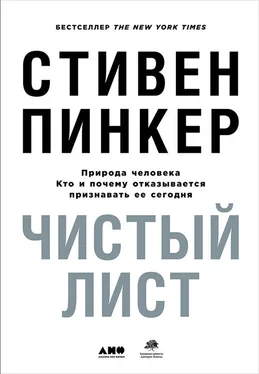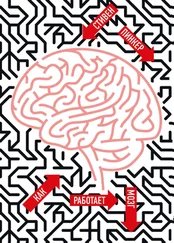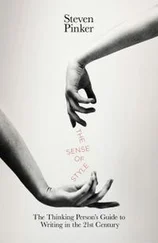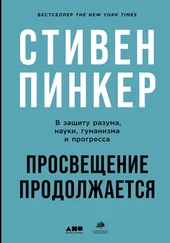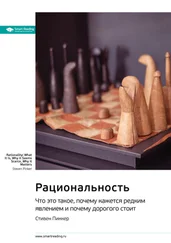Dissanayake, E. 2000. Art and intimacy: How the arts began. Seattle: University of Washington Press.
Divale, W. T. 1972. System population control in the middle and upper paleolithic: Inferences based on contemporary hunter-gatherers. World Archeology, 4, 222–243.
Dorit, R. 1997. Review of Michael Behe's "Darwin's Black Box." American Scientist, 85, 474–475.
Drake, S. 1970. Galileo studies: Personality, tradition, and revolution. Ann Arbor: University of Michigan Press.
Dugatkin, L. 1992. The evolution of the con artist. Ethology and Sociobiology, 13, 3–18.
Dunbar, R. 1998. Grooming, gossip, and the evolution of language. Cambridge, Mass.: Harvard University Press.
Dunn, J., & Plomin, R. 1990. Separate lives: Why siblings are so different. New York: Basic Books.
Dunphy, D. 1963. The social structure of early adolescent peer groups. Sociometry, 26, 230–246.
Durham, W. H. 1982. Interactions of genetic and cultural evolution: Models and examples. Human Ecology, 10, 299–334.
Durkheim, E. 1895/1962. The rules of the sociological method. Glencoe, IL: Free Press.
Dutton, D. 1998. America's most wanted, and why no one wants it. Philosophy and Literature, 22, 530–543.
Dutton, D. 2000. Mad about flowers. Philosophy and Literature, 24, 249–260.
Dutton, D. 2001. Aesthetic universals. In B. Gaut & D. M. Lopes (Eds.), The
Routledge Companion to Aesthetics. New York: Routledge.
Dworkin, A. 1993. Sexual economics: The terrible truth. In Letters from a war-zone. New York: Lawrence Hill.
Eagly, A. H. 1995. The science and politics of comparing women and men. American Psychologist, 50, 145–158.
Easterlin, N., Riebling, B., & Crews, F. 1993. After poststructuralism: Interdisciplinarity and literary theory (rethinking theory). Evanston, IL: Northwestern University Press.
Eaves, L. J., Eysenck, H. J., & Martin, N. G. 1989. Genes, culture, and personality: An empirical approach. San Diego: Academic Press.
Edgerton, R. B. 1992. Sick societies: Challenging the myth of primitive harmony. New York: Free Press.
Eibl-Eibesfeldt, I. 1989. Human ethology. Hawthorne, N. Y.: Aldine de Gruyter. Ekman, P. 1987. A life's pursuit. In T. A. Sebeok & J. Umiker-Sebeok (Eds.), The semiotic web 86: An international yearbook. Berlin: Mouton de Gruyter.
Ekman, P. 1998. Afterword: Universality of emotional expression? A personal history of the dispute. In C. Darwin, The expression of the emotions in man and animals: Definitive edition. New York: Oxford University Press.
Ekman, P., & Davidson, R. J. 1994. The nature of emotion. New York: Oxford University Press.
Ellis, B. J. 1992. The evolution of sexual attraction: Evaluative mechanisms in women. In J. H. Barkow, L. Cosmides, & J. Tooby (Eds.), The Adapted Mind: Evolutionary psychology and the generation of culture. New York: Oxford University Press.
Ellis, L., & Beattie, C. 1983. The feminist explanation for rape: An empirical test. Journal of Sex Research, 19, 74–91.
Elman, J. L., Bates, E. A., Johnson, M. H., Karmiloff-Smith, A., Parisi, D., & Plunkett, K. 1996. Rethinking innateness: A connectionist perspective on development. Cambridge, Mass.: MIT Press.
Ember, C. 1978. Myths about hunter-gatherers. Ethnology, 27, 239–248.
Epstein, J. 1994. On the mathematical biology of arms races, wars, and revolutions. In L. Nadel & D. Stein (Eds.), 1992 lectures in complex systems (Vol. 5,). Readin, Mass.: Addison Wesley.
Epstein, J., & Axtell, R. L. 1996. Growing artificial societies: Social science from the bottom up. Cambridge, Mass.: MIT Press.
Erikson, M. A., & Kruschke, J. K. 1998. Rules and exemplars in category learning. Journal of Experimental Psychology: General, 127, 107–140.
Estrich, S. 2000. Sex and power. New York: Riverhead Press.
Etcoff, N. L. 1999. Survival of the prettiest: The science of beauty. New York: Doubleday.
Evans, D., & Zarate, O. 1999. Introducing evolutionary psychology. New York: Totem Books.
Evans, D. A. 1998. Evolution and literature. South Dakota Review, 36, 33–46. Faigman, D. L. 1999. Legal alchemy: The use and misuse of science in the law. New York: W. H. Freeman.
Farah, M. J., Rabinowitz, C., Quinn, G. E., & Liu, G. T. 2000. Early commitment of neural substrates for face recognition. Cognitive Neuropsychology, 17, 117–123.
Fausto-Sterling, A. 1985. Myths of gender: Biological theories about women and men. New York: Basic Books.
Fehr, E., Fischbacher, U., & Gächter, S. In press. Strong reciprocity, human cooperation and the enforcement of social norms. Human Nature.
Fehr, E., & Gächter, S. 2000. Fairness and retaliation: the economics of reciprocity. Journal of Economic Perspectives, 14, 159–181.
Fernández-Jalvo, Y., Diez, J. C., Bermúdez de Castro, J. M., Carbonell, E., & Arsuaga, J. L. 1996. Evidence of early cannibalism. Science, 271, 277–278.
Festinger, L. 1957. A theory of cognitive dissonance. Stanford, Calif.: Stanford University Press.
Finch, C. E., & Kirkwood, T. B. L. 2000. Chance, development, and aging. New York: Oxford University Press.
Fischoff, S. 1999. Psychology's quixotic quest for the media-violence connection. Journal of Media Psychology, 4.
Fisher, S. E., Vargha-Khadem, F., Watkins, K. E., Monaco, A. P., & Pembrey, M. E. 1998. Localisation of a gene implicated in a severe speech and language disorder. Nature Genetics, 18, 168–170.
Fiske, A. P. 1992. The four elementary forms of sociality: Framework for a unified theory of social relations. Psychological Review, 99, 689–723.
Flynn, J. R. 1999. Searching for justice: The discovery of IQ gains over time. American Psychologist, 54, 5–20.
Fodor, J. A. 1981. The present status of the innateness controversy. In J. A. Fodor (Ed.), RePresentations. Cambridge, Mass.: MIT Press.
Fodor, J. A. 1983. The modularity of mind. Cambridge, Mass.: MIT Press.
Fodor, J. A. 1994. The elm and the expert: Mentalese and its semantics. Cambridge, Mass.: MIT Press.
Fodor, J. A., & Pylyshyn, Z. 1988. Connectionism and cognitive architecture: A critical analysis. Cognition, 28, 3–71.
Fox, J. A., & Zawitz, M. W. 2000. Homicide trends in the United States. Washington, D. C.: U. S. Department of Justice. Available: www.ojp.usdoj.gov/bjs/homicide/homtrnd.htm.
Fox, R. 1984. Kinship and marriage: An anthropological perspective. New York: Cambridge University Press.
Fox, R. 1989. The search for society: Quest for a biosocial science and morality. New Brunswick, N. J.: Rutgers University Press.
Frangiskakis, J. M., Ewart, A. K., Morris, A. C., Mervis, C. B., Bertrand, J., Robinson, B. F., Klein, B. P., Ensing, G. J., Everett, L. A., Green, E. D., Proschel, C., Gutowski, N. J., Noble, M., Atkinson, D. L., Odelberg, S. J., & Keating, M. T. 1996. LIM-Kinase: 1 hemizygosity implicated in impaired visuospatial constructive cognition. Cell, 86, 59–69.
Frank, R. 1999. Luxury fever: When money fails to satisfy in an era of excess. New York: Free Press.
Frank, R. H. 1985. Choosing the right pond: Human behavior and the quest for status. New York: Oxford University Press.
Frank, R. H. 1988. Passions within reason: The strategic role of the emotions. New York: Norton.
Frank, R. H., Gilovich, T., & Regan, D. 1993. The evolution of one-shot cooperation: An experiment. Ethology and Sociobiology, 14, 247–256.
Frazer, J. G. 1890/1996. The golden bough. New York: Simon & Schuster. Freedman, J. L. 1984. Effect of television violence on aggressiveness. Psychological Bulletin, 96, 227–246.
Freedman, J. L. 1996. Violence in the mass media and violence in society: The link is unproven. Harvard Mental Health Letter, 12, 4–6.
Freedman, J. L. 2002. Media violence and aggression: No evidence for a connection. Toronto: University of Toronto Press.
Читать дальше
Конец ознакомительного отрывка
Купить книгу
